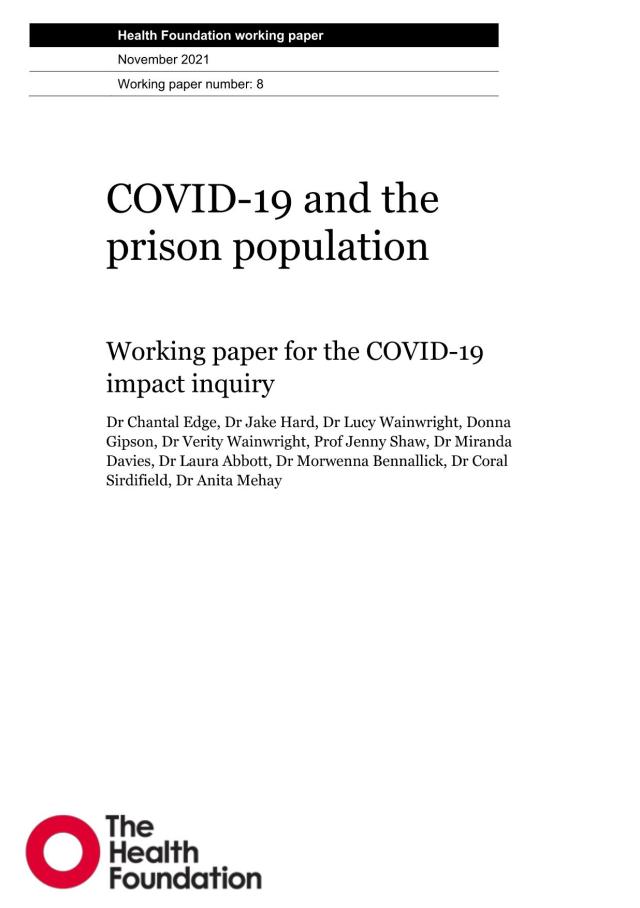COVID-19 and the prison population Working paper for the COVID-19 impact inquiry
November 2021

Key points
- Produced as part of the Health Foundation's COVID-19 impact inquiry, this paper explores how prisons experienced the first year of the pandemic.
- At the outset of the pandemic, there were particular concerns about the effects of COVID-19 on the prison population, which is large, ethnically diverse and ageing, with poorer health than the general population.
- We outline not only the complexities of mitigating the risk of COVID-19 in prisons but how the pandemic amplified existing inequalities.
- Looking to the future, we consider long-term health implications and highlight recommendations for current and future practice.
At the outset of the pandemic, there were particular concerns about the impact of COVID-19 in prisons – which has a large, ethnically diverse and ageing population, with poorer health than the general population. Most prisoners will be released at some point and there is community dividend to improving the health of this population.
Prisons across the UK were quick to introduce a full lockdown, with control measures remaining largely in place for the first year. Yet, even with these highly restrictive control measures, prisoners experienced higher case rates and higher death rates than the wider population. This action has likely had an adverse impact on prisoners’ physical and mental health.
By April 2021 – a full year after England announced its first national lockdown – the prison regime had yet to fully unlock with prisoners remaining isolated in cells for an average of 22.5 hours per day. At this point, the Ministry of Justice suggested that when prisons could safely move to less restrictive regimes, visits from family members could start to re-commence. This would depend on community infection levels.
Now, the landscape in prisons has evolved. Vaccination and asymptomatic testing have been rolled out in line with community guidance and many rehabilitation programmes have been reinstated. Prisons are starting to return to a normal regime, although risk of transmission and possible outbreaks remains high.
This paper demonstrates not only the complexities of mitigating the pandemic risk in prisons, but as with community population groups, reveals how the pandemic amplified existing inequalities. Looking to the future, it highlights a range of areas that need attention and investment – restoration and recovery of services, focus on digital innovations in prison and strengthening interagency working – as well as a greater focus on the wider determinants of health.
Cite this publication
Further reading
Work with us
We look for talented and passionate individuals as everyone at the Health Foundation has an important role to play.
View current vacanciesThe Q community
Q is an initiative connecting people with improvement expertise across the UK.
Find out more


